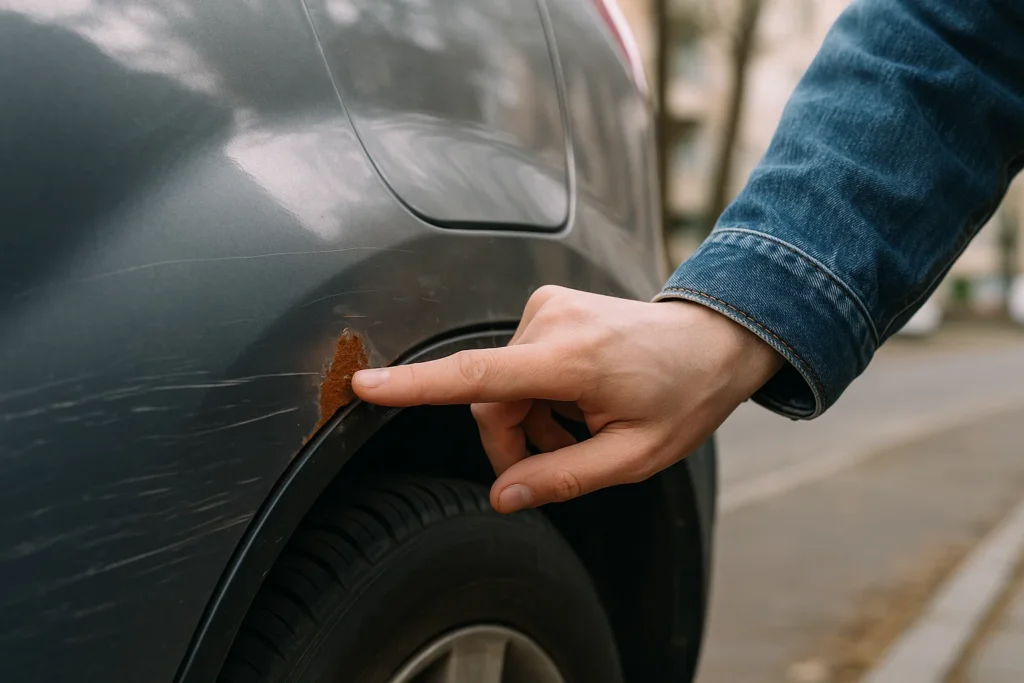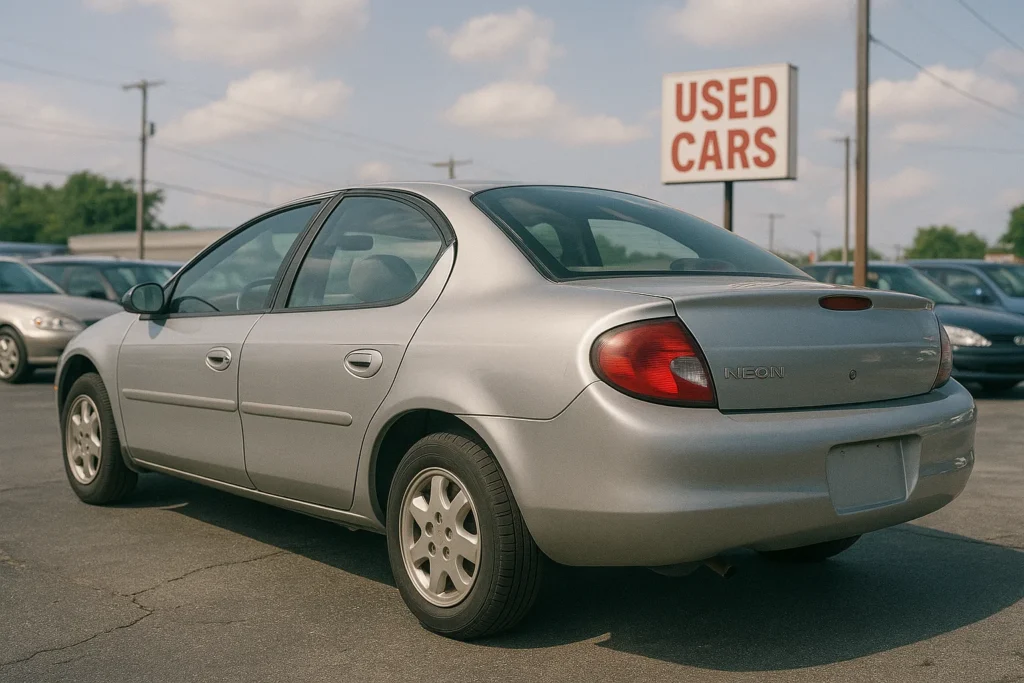Buying a used car can either feel like you just scored the deal of the decade… or like you just adopted a very expensive headache on wheels. Whether you’re a first-time buyer or a seasoned road warrior, knowing how to check the quality of a used car is crucial—unless you’re into surprise breakdowns, mysterious smells, and tires that somehow deflate faster than your motivation on a Monday.How to Check the Quality of a Used Car
In this guide, I’m going to walk you through everything I’ve learned about inspecting used cars. This isn’t just your generic checklist; it’s the real-life, human, been-there-done-that kind of advice. The goal? To help you drive off into the sunset—not into your local mechanic’s garage five minutes later.How to Check the Quality of a Used Car
Why Buying a Used Car Is a Smart (But Risky) Move
Let’s get the obvious out of the way: used cars save you money. The second a brand-new car leaves the dealership, it starts losing value faster than ice cream melts in Karachi heat. So buying used? Smart.
But here’s the catch: you don’t always know what the previous owner put that car through. Midnight drag races? Flood damage? A serious relationship breakup inside the cabin? You never know.How to Check the Quality of a Used Car
So unless you enjoy playing “Automotive Russian Roulette,” you need to inspect the car properly. Here’s how.

The Used Car Inspection Game Plan: Start with Your Senses
Before you get lost in the mechanical mumbo jumbo, start with the basic stuff. Your eyes, nose, and ears are your first line of defense.How to Check the Quality of a Used Car
Visual Inspection: Don’t Just Kick the Tires
You’re not just looking for a car; you’re Sherlock Holmes with oil under your fingernails. Check for:
- Rust and Paint Issues: Look around wheel wells, door edges, under the car. Rust is a slow killer.
- Body Alignment: Do the doors, trunk, and hood line up properly? Uneven gaps could mean accident damage.
- Tire Tread: Uneven wear might mean poor alignment or suspension issues. Use a coin or tire gauge if you’ve got one.
- Lights and Lenses: Cracks in headlights or taillights? Foggy or yellowed covers? That’s wear and tear you’ll pay for soon.
Take a walk around. Twice. You’re looking for inconsistencies, bad repairs, or just anything sketchy. Trust your gut. If something feels off, it probably is.How to Check the Quality of a Used Car
Smell Test: Yep, Seriously
Get inside. Take a deep breath. Weird mildew? Burning oil? Old socks? Every smell tells a story. A clean car should smell like… well, not much. Strong air fresheners could be hiding something more sinister (like water damage or smoke residue).How to Check the Quality of a Used Car
Listen Up: Turn Down the Radio
Start the engine. No music yet. Listen for:
- Clicking, knocking, grinding
- Irregular idle
- Rattling from the exhaust or undercarriage
Drive it. Windows down. Feel the engine and listen. Don’t get distracted by a cool stereo—they’re cheap. Engine trouble? Not so much.How to Check the Quality of a Used Car
Digging Deeper: Things You Absolutely Must Check
This part takes a little more effort, but it’s non-negotiable if you want to avoid regrets later.
Check the Car’s Documents
Paperwork isn’t sexy, but it’s crucial. Ask for:
- Original registration and make sure the VIN (Vehicle Identification Number) matches the one on the car.
- Service history: A full record means the car’s been loved. No history? Proceed with caution.
- Car title: If it says “salvage” or “rebuilt,” the car’s been through a trauma. Ask questions.
- Pollution and road tax certificates, especially if you’re buying in places like the UK, India, or Pakistan.
Pro Tip: Run a vehicle history report using services like Carfax, AutoCheck, or your country’s equivalent. It’ll tell you about accidents, ownership, and mileage rollback.How to Check the Quality of a Used Car

Under the Hood: No, You Don’t Need to Be a Mechanic
Pop the hood. Take a flashlight (or your phone).
- Check fluid levels: Oil should be golden or brown, not black. Coolant should be bright, not rusty or muddy.
- Look for leaks: Any visible wet spots under the hood are a red flag.
- Battery condition: Corroded terminals are a sign of neglect.
- Belts and hoses: Cracks or frays mean they’re due for replacement.
Even if you don’t understand every part, you’ll be surprised how much you can catch just by looking carefully.How to Check the Quality of a Used Car
Suspension and Undercarriage: The Often-Ignored Zone
Squat down and look under the car. Yes, you’ll feel weird. Embrace it.
- Check for oil drips or rust.
- Bounce test: Push down on each corner of the car. If it bounces more than once or twice, the shocks are probably worn.

The Test Drive: Where Truth Comes Out
This is your moment. Don’t just drive around the block while making polite conversation.
What to Focus On:
- Acceleration: Does the car respond smoothly?
- Braking: Any squeaks, grinding, or pulling to one side?
- Steering: Does it feel tight and responsive? Or floaty and loose?
- Transmission: Whether it’s manual or automatic, it should shift smoothly. Any jerkiness = walk away.
- Noise: Rattles, clunks, wind noise—listen carefully.
Drive at various speeds. Try to find a bumpy road. Hit a highway if you can. This isn’t a date—it’s a stress test.How to Check the Quality of a Used CarHow to Check the Quality of a Used Car
Red Flags That Should Make You Run (Not Walk) Away
Even if the car looks like a dream, here are some deal-breakers:
- Check Engine Light that won’t go off.
- Tampered odometer or inconsistent mileage.
- Flood damage (check for mold, rust under the seats, or water stains).
- Fresh paint only on certain parts—could be hiding an accident.
- Seller won’t let you take it to a mechanic. Big yikes.
Get a Professional Opinion: It’s Worth Every Penny
Before you make the deal, always—ALWAYS—get a pre-purchase inspection by a trusted mechanic. This usually costs between $50-$150, but it can save you from a $5,000 mistake. I’ve seen it firsthand. Once had a friend nearly buy a car with a cracked engine block. Looked fine, drove fine—until it didn’t.
If the seller resists? That’s your sign to walk away, no matter how shiny the car looks.
Real Talk: My Personal Used Car Story
Let me tell you about my first used car. I was 19, broke, and thought I found “the one.” It was a blue Honda Civic with a spoiler that looked like it came from Fast & Furious. The seller was chill, had a great beard, and played acoustic guitar (I thought that made him trustworthy… it did not).How to Check the Quality of a Used Car
Long story short? That Civic had been in a front-end collision and “repaired” with duct tape and hope. Two months in, the radiator exploded on a highway. I cried. Then I learned. So now I triple-check everything—and you should too.How to Check the Quality of a Used Car
Bonus: Interior Details People Forget to Inspect
Inside the car, don’t just check if the AC works.
Look at:
- Seat condition: Rips, stains, or sagging? Means wear.
- Controls: Check everything—windows, locks, sunroof, radio, wipers.
- Dashboard lights: They should light up briefly when you start the car, then go off. If they don’t show at all? The bulbs might be removed to hide warnings.
Also: bring a USB charger or phone adapter to check the ports. You’ll thank me later.
Negotiating Like a Pro (Without Being Pushy)
So you found a good car. It passed inspection. Now comes the awkward part: haggling.
Here’s how to do it like a champ:
- Know the market price: Use sites like Kelley Blue Book, Edmunds, or Autotrader to see what the car should cost.
- Use the flaws as leverage: Small things like worn tires or scratches can knock a few hundred off.
- Don’t be afraid to walk away: If the seller won’t budge and your gut says no, trust it.
- Be kind, not aggressive: Most people respond better to respectful negotiation than pushiness.
Final Checklist: Used Car Inspection Essentials
Let’s recap. Here’s your go-to list:
- VIN & title check
- Exterior condition
- Interior electronics
- Engine fluids & leaks
- Undercarriage rust
- Tire wear
- Brake response
- Transmission feel
- AC/heater function
- Test drive performance
- No sketchy smells
- Mechanic’s inspection
If you can tick all these boxes, you’ve got yourself a winner.
Conclusion: Drive Smart, Drive Happy
Buying a used car doesn’t have to feel like gambling with your life savings. With the right steps, a little patience, and maybe a flashlight in your pocket, you can find a car that’ll last you years—without breaking the bank (or your soul).How to Check the Quality of a Used Car
The key is simple: don’t rush. Do your homework. Ask questions. Inspect thoroughly. And trust your instincts. After all, it’s not just about four wheels—it’s about your freedom, your money, and your peace of mind.How to Check the Quality of a Used Car
So the next time someone asks you, “Hey, how do I check the quality of a used car?”—you’ll be the one giving the advice.How to Check the Quality of a Used Car
Happy hunting, and may your next ride be smooth, stylish, and surprisingly affordable.

